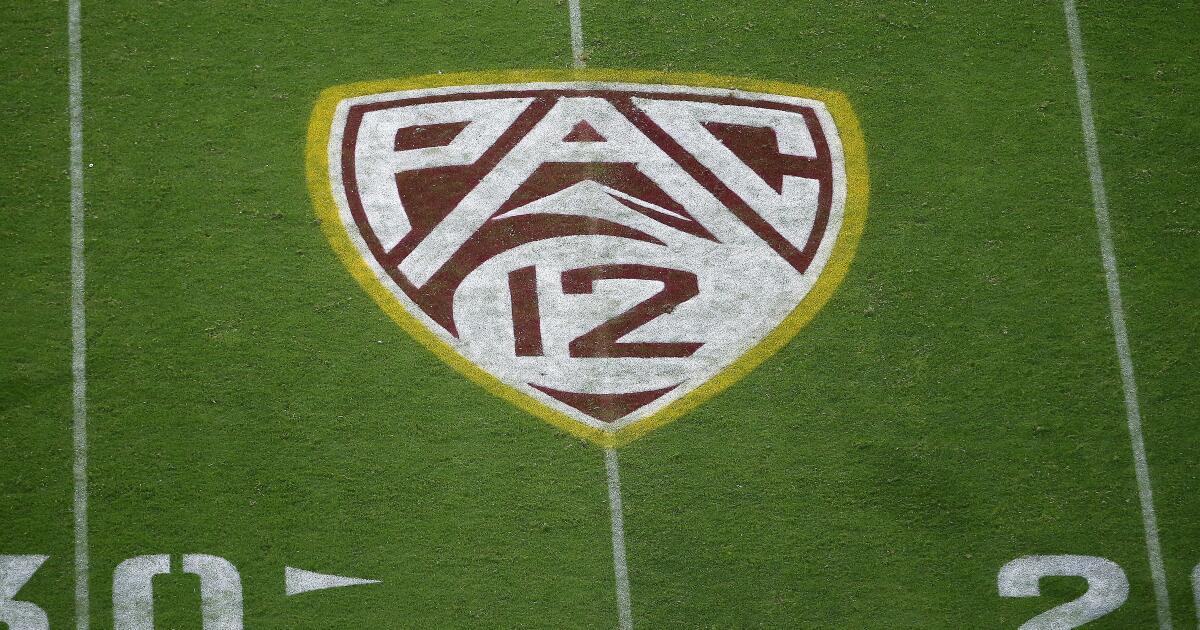BAMANEWSBOT
Staff

Column: It's time for college sports to tell athletes take it or leave it
Group of Pac-12 football players issue list of demands or threaten to boycott season
Eventually, and that moment draws nearer by the day, college athletic administrators need to make a choice:
Are they going to continue backpedaling, or are they going to make a tackle?
Are they going to stand up and stand by their product?
Is enough ever going to be enough?
Because apparently college athletes – or at least college football players – aren’t going to stop asking for more even as they receive concession after concession. The latest group with its hand out is Pac-12 football players, who issued a lengthy list of “demands” Sunday with the threat of boycotting the season.
Here’s a suggestion: Go ahead, boycott away. Your loss.
The man behind the curtain is former UCLA linebacker Ramogi Huma, a proponent of unionizing collegiate athletes who heads a nonprofit advocacy group called the National College Players Association. Twelve football players from nine Pac-12 schools identified themselves as part of the movement that adopted the hashtag, #WeAreUnited.
It’s unclear how many of their teammates have joined them. Washington cornerback Elijah Molden, a projected first-round pick next spring, offered his implicit support but admitted “some of the demands seem unrealistic and far-fetched given the context of our unique situation (COVID, financial restrictions, time, etc.).”
Many of the 17 demands involve COVID-19 and racial equality, the summer’s two hottest topics and no doubt a way to exert leverage with a sympathetic public ear. Some are reasonable and either already exist or could be implemented easily. But the crux of what this is about is no different than what it’s always about: money.
The first item under the “Fair Market Pay, Rights & Freedoms” section: “Distribute 50% of each sport’s total conference revenue evenly among athletes in their respective sports.”
(The presumptive math: If each Pac-12 football program gets, say, $32 million per year from TV and bowl payouts, the 100-odd players on the roster should split $16 million of it.)
On the surface, it sounds great. It always does.
College football generates billions of dollars, coaches make too much, facilities are over the top, and the poor, exploited players get nothing.
The reality: They don’t get nothing.
They get a full scholarship for five (and sometimes six) years, plus grad school if you finish your undergraduate degree early and still have eligibility. In some cases, that’s worth $350,000.
You get housing and cost of attendance stipends, recent additions because the scholarship alone wasn’t enough. That can be another $10,000 per year in cash.
You get priority registration so you don’t have to wait a semester or six for that popular, upper-division class with the primo professor.
You finish with no student loans, or $37,468 less than the average California grad did last year.
You get academic tutoring 24/7. You have food available 24/7. You fly charter, stay in five-star hotels, get per diem, get boxes and boxes of gear. You have access to some of the best doctors and dentists and ophthalmologists in the county. You work out in a private weight room with state-of-the-art equipment. You’re conferred an elite social status on campus.
Starting soon, you can enter into personal endorsement contracts for your name, image and license made more marketable by the 100-year history and branding of your university.
What’s the total value? $100,000 per year? $200,000 per year? More?
That’s not enough?
At some point, college administrators need to say it is. Need to say: “Here’s what we can offer. We think it’s more than generous. If you don’t like it, you are under no obligation to accept it. College sports aren’t for everyone.”
Daishen Nix, a five-star point guard from Las Vegas, didn’t earlier this year. Had committed to UCLA. Signed a pro contract with the NBA’s G League instead.
No hard feelings. Best of luck.
The problem is that people making the demands never operated an athletic department, never tried to balance a budget, never filed an NCAA or Title IX compliance report, never understood the delicate, flawed, intricate biosphere in which college sports gasp for breath.
The great myth is that colleges are running $100 bills through counting machines, then stashing them in offshore accounts in the Caymans. About two dozen athletic departments actually turn something approaching a profit; the rest are partially or, in some cases, heavily subsidized by tax dollars, student fees and alumni donations – and, as we’re learning now, dangerously exposed to the slightest economic downturn.
In many ways, Huma and his players are barking up the wrong tree. You want to keep and distribute the riches that power conference football generates? Send your demands to the U.S. Department of Education, which administrates Title IX and its guarantees of gender equity at any university receiving federal grants (which is pretty much all of them).
Title IX means universities must offer a comparable number of participation opportunities, scholarships, resources and amenities to female athletes with little hope of any return on the investment. If you play Division I football and its 85 scholarships, you must sprinkle 85 scholarships on the female side of the ledger – usually across several sports, which explains why many athletic departments offer more women’s than men’s sports.
One solution is to cut football scholarships from 85 to 45, or enough for a first and second string plus a kicker. Seems reasonable. That would allow athletic departments to eliminate 40 scholarships from the women’s side and drastically reduce overall expenses, presumably leaving more football dollars to be distributed among football players.
But now you just cut 5,000 scholarships nationally that would have been used for football players who, let’s face it, might not otherwise go to college (or be admitted). You just eliminated opportunities for the very people you purport to represent.
Another demand from Huma’s group is to end “lavish facility expenditures.”
Great idea. Would his players be OK asking a English Lit major for a spot on the bench press at the student rec center; sharing a practice field with Theta Chi’s IM flag football team; having 350-pound linemen cram into middle seats on a Southwest flight to road games, then stay four to a room at Motel 6; waiting in line at the student health center to get their injured knee examined and then hoping to be scheduled for an MRI sometime in the next month?
Athletic directors don’t want to build those lavish facilities either, but they’ll keep doing it as long as recruits keep making college choices based on cherry wood locker rooms instead of chemistry departments.
Nor do ADs want to pay an offensive coordinator $1 million per year. But they also understand the capitalistic principles of a free market economy and the effect of winning football games on their bottom line – and don’t want some guy with a backwards cap from the local JC spitting chewing tobacco into a cup while mulling over third-and-long in the fourth quarter at the Rose Bowl.
The Ivy League peered over the slippery slope back in 1954 and made the concerted decision not to offer athletic scholarships. You can apply, and qualify, for financial aid like every other student.
Athletes who go there know the deal and have accepted its terms.
Don’t like it? Don’t go there.
College sports aren’t for everyone.


